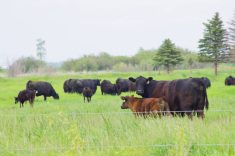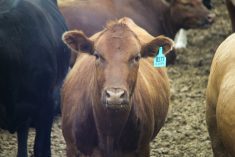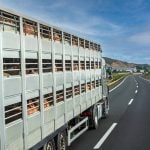It’s arrived: facial recognition and 24/7 video monitoring of every movement. That may sound like a science fiction movie, but don’t worry. It’s not for you. It’s for your cattle.
An artificial intelligence system named BETSY has been developed by OneCup AI, an Alberta-based tech startup. The company is offering it to producers willing to embrace technology as a way to improve efficiency, herd health and peace of mind.
Using upgraded Wi-Fi and security cameras mounted in high-traffic areas such as watering holes, salt licks or feeding stations, OneCup AI is using facial recognition to track up to 1,000 cattle.
Read Also

Grazing ‘sweet spot’ boosts pasture performance
Timing-focused approach to pasture management touted to boost forage growth, livestock gains while also cutting farmer labour and inputs
According to the company, BETSY can enhance farmers’ return on investment by serving in many observation and notification roles, including early disease detection by tracking respiration, coughing, limping, back arching and depression.
“What we provide is an extra set of eyes on the ground when farmers can’t be there,” said OneCup AI CEO Mokah Shmigelsky. “This is like an AI ranch hand being there when they’re off farm doing their other work or wanting to get some sleep during calving season. We are a proactive monitoring system.”
The company can work with feedlots, but its current focus is cow-calf operations. BETSY monitors intake and output, which plays an essential role in animal growth. The system also tracks feed consumption, which helps determine optimal rations to cut costs and optimize feed schedules.
Tracking calves
How does the company teach BETSY to recognize issues like lameness?
“Really, it’s just a case of how you would learn — the same way you would learn to recognize that an animal is limping,” said Shmigelsky. “BETSY learns the same way. She learns by seeing animals that are limping versus animals that are not limping.”
BETSY automatically sends text messages or emails, depending on what’s happening with a herd or specific animal. Farmers also have a full dashboard of their animal data points, with herd-level or individual animal overviews or spreadsheets.
“You can add in more information about your animals if you have that on your farm already,” said Shmigelsky. “And then all your data is in one place.”
The technology in its current form is intended to augment staff, not replace them. But the company is making improvements, and lack of qualified talent in the agriculture industry could make BETSY even more useful.
“This could essentially replace one ranch hand,” said Shmigelsky. “You might only need to hire one ranch hand for your summer season versus two or three, so it can really help with staffing in the future.”
Seeking early adopters
One owner of a 300-head cattle ranch who uses rotational grazing said BETSY may not work well on his operation, but the system could have other applications. Ben Campbell, who operates Tullichewan Ranch with his wife Stephanie near Black Diamond, said there are huge differences in ranch management styles.
“Because I’m moving them every day or every other day, any cow that is lame or unwell is always in the back of the herd when they come through,” he said. “It only takes me 30 minutes every other day to do that. There isn’t really an opportunity to save time or labour because I’m already on an extremely low time-labour situation.”
BETSY could work for feedlots, dairies or farms where cows are moved less frequently, when a small number of people manage many animals or when staff may be unreliable.
“To me, that’s where it seems like it has an awesome opportunity,” Campbell said. “Feedlot-type situations, there’s a huge opportunity, and then these ranches where they’re not checking cows all the time would be another opportunity.”
The standard OneCup AI system uses four cameras that cost $40 per month each. The system setup fee is $995.
“During calving time, farmers might place cameras in the barn or in the pens where the first-time calvers are,” said Shmigelsky. “They are easy to move. They are standard security-type cameras, so they are very easy to move around where your animals go.”















